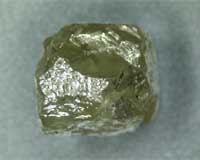 |
Washington DC (SPX) Mar 03, 2010 Rice University researchers have found a way to stitch graphene and hexagonal boron nitride (h-BN) into a two-dimensional quilt that offers new paths of exploration for materials scientists. The technique has implications for application of graphene materials in microelectronics that scale well below the limitations of silicon determined by Moore's Law. New research from the lab of Pulickel Ajayan, Rice's Benjamin M. and Mary Greenwood Anderson Professor in Mechanical Engineering and Materials Science and of chemistry, demonstrates a way to achieve fine control in the creation of such hybrid, 2-D structures. Layers of h-BN a single atom thick have the same lattice structure as graphene, but electrically the materials are at opposite ends of the spectrum: h-BN is an insulator, whereas graphene, the single-atom-layer form of carbon, is highly conductive. The ability to assemble them into a single lattice could lead to a rich variety of 2-D structures with electric properties ranging from metallic conductor to semiconductor to insulator. Because graphene is a conductor and h-BN is an insulator, the proportion of one to the other determines how well this new material conducts electrons. Lijie Ci and Li Song, both postdoctoral research scientists in Ajayan's lab, found that by putting down domains of h-BN and carbon via chemical vapor deposition (CVD), they were able to control the ratio of materials in the film that resulted. Ci and Song are primary authors of a paper about the work that appeared in the online edition of Nature Materials this week. Ajayan said the discovery is thrilling for a materials scientist. "From a graphene perspective, it now gives us an opportunity to explore band-gap engineering in two-dimensional layered systems," he said. "The whole phase diagram of boron, carbon and nitrogen is fascinating, unexplored and offers a great playground for materials scientists. "This is only the first instance showing that these structures can indeed be grown in 2-D like graphene," Ajayan said. "I think the whole new field will be exciting for basic physics and electro-optical applications." Graphene has been the subject of intense study in recent years for its high conductivity and the possibility of manipulating it on scales that go well below the theoretical limits for silicon circuitry. A layer of graphene is a hexagonal lattice of carbon atoms. In bulk, it's called graphite, the stuff of pencil lead. Graphene was first isolated in 2004 by British scientists who used Scotch tape to pull single-atom layers from graphite. "Graphene is a very hot material right now," said Song, who had teamed with Ci to investigate doping graphene with various materials to determine its semiconducting properties. Knowing that both boron and nitrogen had already been used in doping bulk graphite, they decided to try cooking it via CVD onto a copper base. Structurally, h-BN is the same as graphene, a hexagon-shaped lattice of carbon atoms that looks like chicken wire. Ci and Song found that through CVD, graphene and h-BN merged into a single atomic sheet, with pools of h-BN breaking up the carbon matrix. The critical factor for electronic materials is the band gap, which must be tuned in a controlled manner for applications. Graphene is a zero-gap material, but ways have been proposed to tailor this gap by patterning it into nanoscale strips and doping it with other elements. Ci and Song took a different approach through CVD, controlling the ratio of carbon to h-BN over a large, useful range. It remains challenging to produce single layers of the hybrid material, as most lab-grown films contain two or three layers. The researchers also cannot yet control the placement of h-BN pools in a single sheet or the rotational angles between layers - but they're working on it. In fact, having multiple layers of the hybrid at various angles creates even more possibilities, they said. "For pure graphene, this rotation will affect the electronic properties," said Ci, who moved with Ajayan's lab from Rensselaer Polytechnic Institute to Houston in 2007. The researchers are considering producing these materials on industrial-scale wafers. Graphene sheets several inches wide have already been synthesized in other labs, Ci said. And because graphene can be lithographically patterned and cut into shapes, the new material has great potential to be fabricated into useful devices with controllable electrical properties. Co-authors on the paper with Ci, Song and Ajayan are visiting students Deep Jariwala and Yongjie Li and visiting professor Anchal Srivastava, all at Rice; Chuanhong Jin of the Nanotube Research Center, National Institute of Advanced Industrial Science and Technology in Tsukuba, Japan; Dangxin Wu, Z.F. Wang and Feng Liu of the Department of Materials Science and Engineering at the University of Utah; Kevin Storr of the Department of Physics at Prairie View A and M University; and Luis Balicas of the National High Magnetic Field Laboratory in Tallahassee, Fla.
Share This Article With Planet Earth
Related Links Rice University Space Technology News - Applications and Research
 Nanotechnologists Perfect Near-Frictionless Diamond Material
Nanotechnologists Perfect Near-Frictionless Diamond MaterialPhiladelphia PA (SPX) Mar 01, 2010 Researchers at the University of Pennsylvania, the University of Wisconsin-Madison and IBM Research-Zurich have fabricated an ultra sharp, diamond-like carbon tip possessing such high strength that it is 3,000 times more wear-resistant at the nanoscale than silicon. The end result is a diamond-like carbon material mass-produced at the nanoscale that doesn't wear. The new nano-sized tip, re ... read more |
|
| The content herein, unless otherwise known to be public domain, are Copyright 1995-2010 - SpaceDaily. AFP and UPI Wire Stories are copyright Agence France-Presse and United Press International. ESA Portal Reports are copyright European Space Agency. All NASA sourced material is public domain. Additional copyrights may apply in whole or part to other bona fide parties. Advertising does not imply endorsement,agreement or approval of any opinions, statements or information provided by SpaceDaily on any Web page published or hosted by SpaceDaily. Privacy Statement |